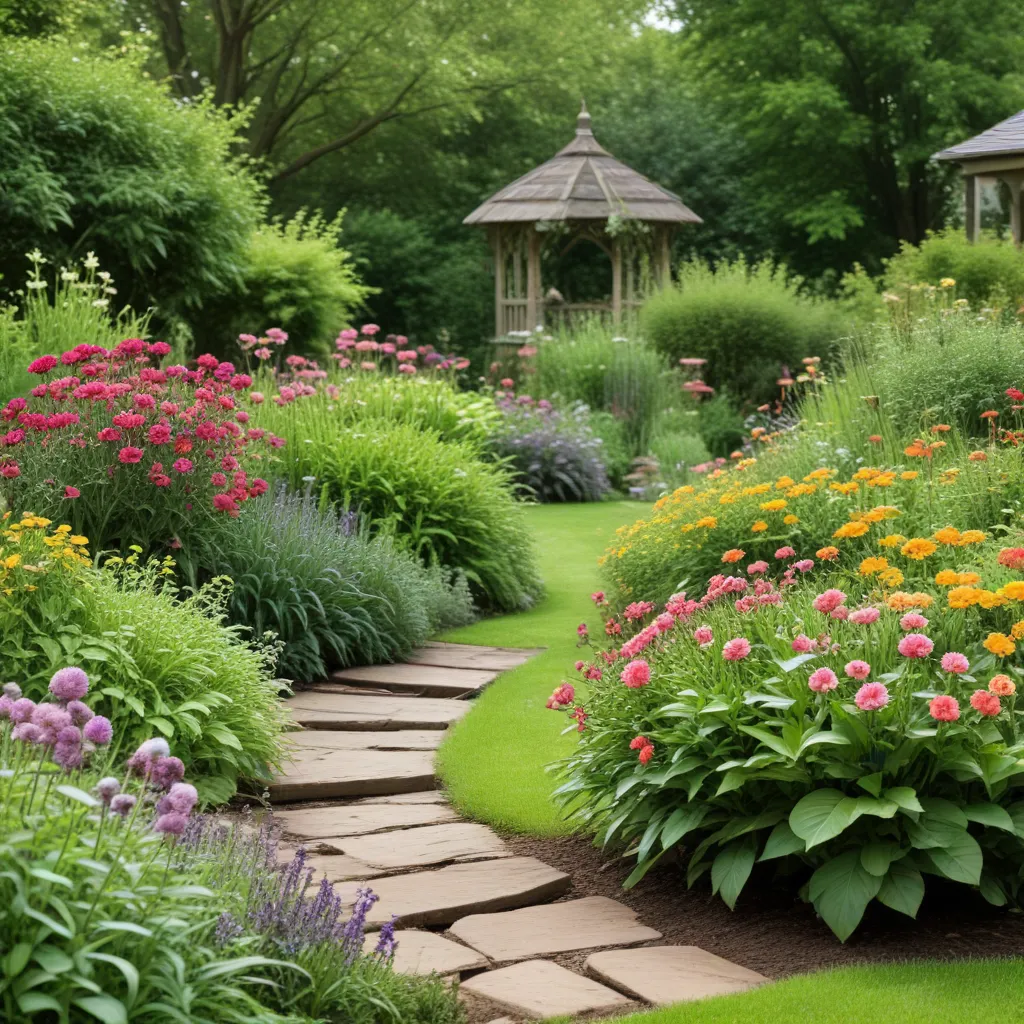
Creating a garden that blooms with vibrant color, texture, and growth throughout the seasons requires an intentional balance between planning and adaptability. At the Wine Garden Inn, we’ve found that embracing the cyclical nature of our climate and microclimate is key to cultivating a harmonious and resilient outdoor space. Whether you’re tending to plant beds, container gardens, or a full-fledged landscape, these seasonal gardening principles can help you achieve an oasis of balance and beauty.
Harmony in Nature
At the heart of a thriving garden lies an understanding of the delicate interplay between all living organisms. Biodiversity is not just a buzzword, but a guiding principle for creating a self-sustaining ecosystem. By selecting a diverse array of native plants, you invite a symphony of pollinators, beneficial insects, and songbirds to your garden. This intricate web of life not only supports the health of your plants but also brings a sense of wonder and vitality to your outdoor space.
Adaptability and Resilience
Mother Nature is ever-changing, and a successful garden must be able to weather the ebbs and flows of the seasons. Rather than fighting against the natural rhythms of your climate zone, embrace the unique challenges it presents. Choose plants that are well-suited to your local conditions, whether that means drought-tolerant succulents, shade-loving perennials, or cold-hardy groundcovers. By cultivating resilience, your garden will thrive even in the face of unpredictable weather patterns or pest infestations.
Cyclical Growth Patterns
The dance of the seasons is a mesmerizing one, with each phase offering its own beauty and purpose. In spring, we witness the revitalization of the garden, as bulbs burst forth and fresh foliage unfurls. Summer brings a lush abundance of blooms and aromatic herbs, while autumn ushers in a pageant of vibrant hues and seed heads. Even winter’s bare branches hold the promise of the year to come. Embracing these natural cycles allows you to plan your garden’s composition and maintenance with a rhythmic flow.
Spring Revitalization
As the first warm days of spring arrive, it’s time to breathe new life into your garden. Begin by amending your soil with organic matter, such as compost or well-rotted manure, to nourish the roots of your plants. Carefully prune any damaged or overgrown plants, and divide perennials to encourage vigorous growth. This is also the perfect time to plant new annual and perennial flowers, as well as cool-season vegetables and herbs.
Summer Maintenance
With the arrival of summer, your garden will be in full bloom, requiring regular watering, weeding, and deadheading to maintain its splendor. Keep a watchful eye for any pest or disease issues, and address them swiftly with organic, eco-friendly solutions. Consider adding mulch around your plants to retain soil moisture and suppress weed growth. Regularly harvesting your vegetables and herbs will encourage continued production, providing a bounty of fresh, flavorful ingredients for our gourmet breakfasts and wine-pairing dinners.
Autumn Preparation
As summer’s heat begins to wane, it’s time to prepare your garden for the cooler months ahead. Start by cutting back perennials and removing any dead or dying foliage. Plant bulbs for a spectacular spring display, and consider adding cold-hardy annuals or biennials to extend the season’s color. Replenish your soil with a fresh layer of compost or aged manure, and consider sowing a cover crop to enrich the earth over the winter.
Complementary Plant Selections
When designing your garden, look for plants that complement each other in terms of form, texture, and color. The concept of “thrillers, fillers, and spillers” popularized in container gardening can also be applied to larger beds and borders. Choose a bold, attention-grabbing “thriller” as the focal point, surround it with lush, textural “fillers,” and allow cascading “spillers” to soften the edges.
Intentional Layouts
The way you arrange your plants can have a significant impact on the overall aesthetic and functionality of your garden. Consider using symmetrical or asymmetrical designs to create a sense of balance and rhythm. Incorporate pathways and seating areas to invite guests to explore and linger, and don’t forget to leave room for whimsical or personal touches that reflect your unique style.
Nurturing Biodiversity
By prioritizing native plants and providing a diverse array of food sources and habitats, you’ll cultivate a thriving ecosystem that supports a wide range of pollinators, beneficial insects, and other wildlife. This not only enhances the visual interest of your garden but also contributes to the health of the broader environment.
Soil Health and Fertility
The foundation of a vibrant garden lies in the quality of your soil. Regularly testing and amending your soil with organic matter can improve nutrient levels, water retention, and soil structure. Additionally, consider implementing cover cropping, no-till practices, and integrated pest management to create a self-sustaining, regenerative soil ecosystem.
Water Management Strategies
Water is a precious resource, and a well-designed garden can help you conserve it. Incorporate drought-tolerant plants, rain gardens, and drip irrigation systems to minimize water waste. Monitor your plants’ needs and adjust your watering schedule accordingly, taking into account factors like precipitation, temperature, and humidity.
Integrated Pest Control
Rather than reaching for harsh chemical pesticides, embrace a more holistic approach to pest management. Encourage the presence of beneficial insects like ladybugs and lacewings, which prey on common garden pests. Use physical barriers, companion planting, and cultural controls to deter unwanted visitors, and spot-treat with organic or natural solutions when necessary.
By embracing the principles of harmony, adaptability, and cyclical growth, you can create a Wine Garden Inn garden that is not only visually stunning but also ecologically resilient. As you cultivate your outdoor oasis, remember that the journey is as rewarding as the destination. Enjoy the ebb and flow of the seasons, take delight in the diversity of life that thrives within your garden, and savor the bounty it provides for our winemaking journey and culinary delights.
